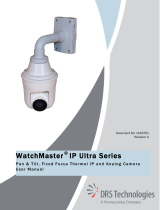THE TERM “BACKUP” MEANS TO MAKE A REDUNDANT “COPY” OF YOUR DATA – NOT TO
SIMPLY “MOVE” YOUR DATA FROM ONE DEVICE TO ANOTHER.
3-2-1 Backup!
We strongly recommend that you keep at least 3 copies of all your data
on multiple devices. In addition to a primary copy of your data (your working directory), at
least one copy of your data should sit on a fireproof waterproof hard drive, like the ioSafe
Solo series, or be offsite at a second location. The ioSafe Solo G3 is a great backup device
that can help protect data onsite. No matter what the data storage device, keeping
redundant copies of your irreplaceable data will improve your chances for data recovery.
Avoid bumping, jarring or dropping the ioSafe Solo G3 while connected to a computer and
in use. Mechanical hard disk drives (HDD) are more susceptible to damage while they’re
operating. Inside a mechanical hard disk drive is a spinning disk and small read/write drive
head that “flies” on a cushion of air above the disk. If the drive head hits the spinning disk,
data loss can occur. Solid State Drives (SSD) have no moving parts so are less susceptible to
shock. If you require that the drive continue to operate while being dropped or during
vibration (as present while in an operating vehicle), we highly recommend the ioSafe
products that incorporate an SSD for the ultimate in drop and shock protection.
Do not disconnect any cables while the ioSafe Solo G3 is powered on without first stopping
or ejecting the device through the operating system software interface. Disconnecting any
drive during a read/write event can cause logical corruption on the drive, both SSD and
HDD drives, which can sometimes result in data loss.
Use proper surge and uninterruptible power supplies (UPS) to guard your computer system
against abrupt outage and voltage spikes during brownouts and lightning storms.























